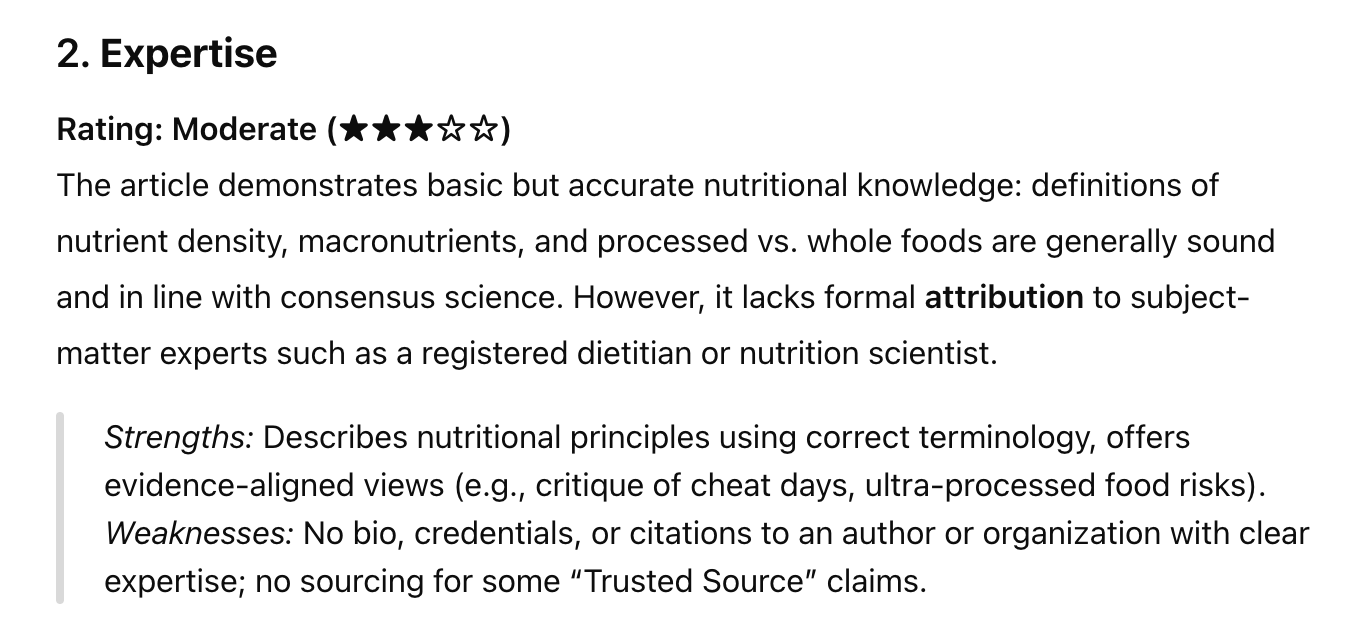A publisher's playbook for YMYL and E.E.A.T
Here's how to boost the E.E.A.T signals for YMYL content, especially in the age of AI
#SPONSORED
🏆 NewzDash Tracks AI Overviews for all Trending News Queries
The ONLY SEO platform built for real-time Google Search, News & Discover.
✅ AI Overview Tracking
✅ Real-Time Search Volume
✅ Unlimited Trends Rankings
✅ Historic Performance & KPIs
✅ Global Competitive Analysis
✅ Publish-to-Indexing Tracking
✅ Instant SEO Recommendations
and much more!
Hello, and welcome back. Jessie here, back from a weekend spent chilling out, maxing, relaxing and staying cool at a rooftop pool (after softball, obviously. It is summer — every weekend involves softball.).
This week: How to boost the E.E.A.T signals for YMYL content. Google holds websites with a high proportion of Your Money or Your Life content to stricter standards. These sites must clearly demonstrate experience, expertise, authority and trustworthiness. In this issue, we cover ways to improve those signals, including how to use AI tools to identify opportunities.
Join our community of news SEOs on Slack to chat any time.

Let’s get it.
In this issue:
What is YMYL?
What to avoid
How to build E.E.A.T for YMYL
THE 101
What is YMYL? A recap
Your Money or Your Life (YMYL) content refers to topics that can affect a person’s health, financial stability, safety or societal well-being. Because of the potential real-world harm, Google holds this content to a higher standard in its Search Quality Rater Guidelines (QRG).
As news organizations regularly cover a broad swath of YMYL topics, it is essential publishers demonstrate strong E.E.A.T signals for these pages.
While not a direct ranking factor, E.E.A.T is a critical self-assessment tool. Ultimately, content on high-impact topics must prioritize being accurate and helpful, especially if negative outcomes could occur from misleading information.
To succeed in the volatile search landscape and provide value to readers, publishers must demonstrate E.E.A.T across their site.
THE HOW TO
What to avoid when building E.E.A.T for YMYL
First, what to avoid: Content written entirely by AI. Google says its focus is on the “quality of content, rather than how content is produced.” It says it wants to reward original, high-quality content and penalize low-quality AI-generated content.
Tools like ChatGPT have made it easy to produce reams of content, something Ezra Klein described as “driving the cost of bullshit to zero.” But, speed and scale don’t equal value. With widespread access to AI tools, it’s never been more important to be distinctive. Being memorable and trustworthy is what sets good content apart.
AI can be helpful for developing an outline, brainstorming headlines or tightening copy. But human editors should still review all pieces before publishing — not just for accuracy, but for originality and tone. As Barry Adams puts it, the worst thing a writer (and by extension, a publisher) can be is forgettable.
Building E.E.A.T for YMYL content
As Google continues its years-long effort to make artificial intelligence central to Search, it's more important than ever to create YMYL content that genuinely improves readers' lives. Distinctive journalism is better positioned to connect with readers and build direct relationships.
The first step is to get a baseline. Determine how much YMYL content your site currently produces and has in the archive. This puts into context your risk profile to understand how much scrutiny your site may face in search.
Conduct a content audit (time permitting). Review stories that are currently getting traffic to ensure they meet E.E.A.T standards.
For stories that don’t yet meet E.E.A.T standards, outline the updates needed to bring it up. Be rigorous in your review of YMYL content. Look for opportunities to cite a more current study, consult an authoritative source or answer new, more relevant questions. Always link to these resources to enhance transparency.
Consider AI tools to help improve E.E.A.T signals. Give ChatGPT Google’s QRG and your content, and ask it for recommendations. In a prompt, tell ChatGPT to memorize QRG and then use the guidelines to uncover improvements.

Semrush also has an AI-powered tool that provides E.E.A.T-specific recommendations.
AI shouldn’t hold the pen, but it can highlight your blindspots or uncover areas of opportunity.
Once the improvements are done, tell readers and Google. Here’s how:
Update the timestamp to signal freshness;
Include a “How we reviewed this article” section that details the research process;
Expand the byline field to include the writer and reviewer, along with their credentials;
Explain if and how new products were tested or reviewed (for affiliate);
Include a form/email address to report errors/corrections;
List relevant, public sources.
It’s not just about what you know — it’s about demonstrating how you know it. Building E-E-A-T for YMYL content means making your expertise, sources and process visible and verifiable.
Decide how to handle unhelpful URLs. Deleting old reporting is a no-go for many publications. That said, if you uncover spammy or other unhelpful content (like coupons), consider removing it from the site.
The bottom line: YMYL content demands a higher standard of trust. To win on search, demonstrate strong E.E.A.T signals across all of your journalism. In an AI world, it’s more important than ever to demonstrate your publication’s credibility.
#SPONSORED - The Classifieds
Get your company in front of more than 13,000 writers, editors and digital marketers working in news and publishing. Openings start July, 2025. Sponsor the WTF is SEO? newsletter!
RECOMMENDED READING
Google news and updates
🤖 Google: Support for seven structured data features are being phased out.
🤖 Barry Schwartz: Google AI Mode finally rolling out to all users in the U.S.
🤖 Barry Schwartz: Google will move AI Mode features into AI Overviews and the main search experience, CEO Sundar Pichai says.
Even more recommended reading
🛜 Thomas Germain for BBC: Is Google about to destroy the internet?
🔝 Gianluca Fiorelli: How publishers can thrive in the age of AI search with Lily Ray.
🔍 Ivan Palii: Looker templates to analyze traffic from AI chats.
🧑💼 The Associated Press: Google offers buyouts to more workers amid AI-driven tech upheaval and antitrust uncertainty.
▶️ The Verge: Would you switch browsers for a chatbot?
🗞️ Harry Clarkson-Bennett: Navigating AI Mode for publishers.
What did you think of this week's newsletter?
(Click to leave feedback.)
Catch up: Last week’s newsletter
Have something you’d like us to discuss? Send us a note on Twitter (Jessie or Shelby) or to our email: seoforjournalism@gmail.com.
Written by Jessie Willms and Shelby Blackley








